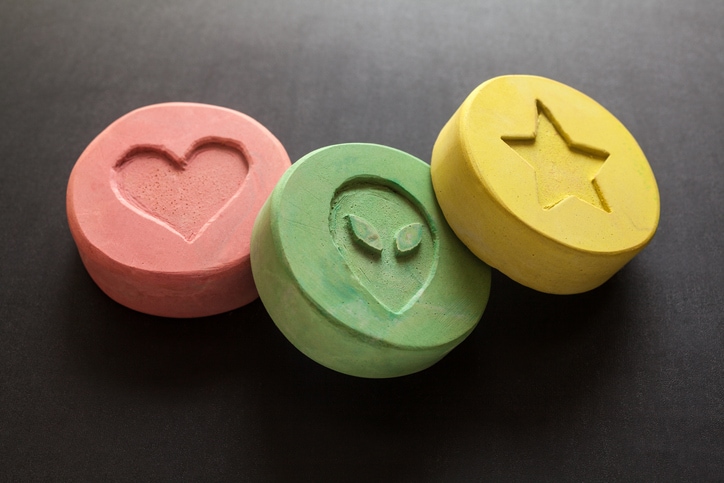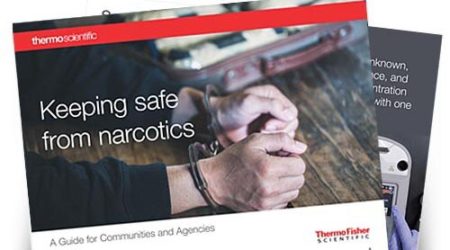 “Yaba” are pills with a mixture of methamphetamine and caffeine. This combination is common throughout Asia.
“Yaba” are pills with a mixture of methamphetamine and caffeine. This combination is common throughout Asia.
As a powerful stimulant, methamphetamine, even in small doses, affects the central nervous system and can increase wakefulness and physical activity and decrease appetite. The National Institute of Drug Abuse also warns that methamphetamine can also cause a variety of cardiovascular problems, including rapid heart rate, irregular heartbeat, and higher blood pressure. Methamphetamine itself is also known as meth, blue, ice, and crystal, among many other terms, and it takes the form of a white, odorless, bitter-tasting crystalline powder that easily dissolves in water or alcohol.
‘Yaba’, which means crazy medicine in Thai, is produced in Southeast and East Asia. The drug is popular in Asian communities in the United States and increasingly is available at raves and techno parties. The U.S. Department of Justice on its website explains that Yaba is sold as tablets. “These tablets are generally no larger than a pencil eraser. They are brightly colored, usually reddish-orange or green. Yaba tablets typically bear one of a variety of logos…. Yaba tablets typically are consumed orally. The tablets sometimes are flavored like candy (grape, orange, or vanilla). Another common method is called chasing the dragon. Users place the yaba tablet on aluminum foil and heat it from below. As the tablet melts, vapors rise and are inhaled. The drug also may be administered by crushing the tablets into powder, which is then snorted or mixed with a solvent and injected.”
The bright colors and candy flavors of yaba tablets are examples of distributors’ attempts to appeal to young people. These young people face the same dire consequences as older methamphetamine users, and the Justice Department warns that overdoses can cause hyperthermia (elevated body temperature), convulsions, and death. Individuals who use yaba also may have episodes of violent behavior, paranoia, anxiety, confusion, and insomnia.
The “Golden Triangle” — an area where the borders of Thailand, Laos, and Myanmar meet at the confluence of the Ruak and Mekong rivers — has become the world’s most active manufacturer and exporter of synthetic drugs. The Golden Triangle has been one of the largest opium-producing areas of the world since the 1950s. Most of the world’s heroin came from the Golden Triangle until the early 21st century when Afghanistan became the world’s largest producer. And officials are seeing yaba, as well as other forms of illicit drugs being increasingly trafficked through the region.
The Philippine Drug Enforcement Agency (PDEA) is working hard to stem the flow of these harmful substances. Unfortunately, it is easy to conceal and micro-traffic these drugs in small packages, disguise and mis-label as innocent substances, and transport in barrels among other products or on small vessels from port to port. So the PDEA invested in a new ally to boost their efforts, a handheld chemical analyzer. The analyzer is a handheld integrated Raman and FTIR instrument, capable of identifying more than 15,000 individual substances in an average of 30 seconds or less.
Because the portable analyzer uses a non-destructive analysis technique, it can precisely identify and analyze suspect substances ‘on the spot’ in seconds. The technology works even through packaging material such as plastic bags, so that the packages need not be opened, and law enforcement personnel don’t need to risk contact with dangerous substances such as potent synthetic drug compounds such as fentanyl, another high-risk trafficked drug.
It was this analyzer that helped PDEA officials discover that a Golden Triangle syndicate was responsible for a shipment of drugs, which were similar to drugs recovered a week earlier in Ayala Alabang Village in Muntinlupa City. Anti-narcotics operatives confiscated some P1.1 billion worth of shabu (which is another slang name for ya ba made in neighboring regions) during a raid on a house inside that village and discovered more than 100 kilos of drugs concealed inside tea boxes and biscuit tins. The two shipments together were estimated to be worth more than P2.6-billion. (Piso, the Philippine peso, is the official currency of the Philippines.) Following such field testing, PDEA will also conduct purity testing to determine if the illegal drugs match seized drugs from other operations, helping agents establish connections and relationships between the traffickers involved.
Every month of every year, tons of illegal drugs move through the large part of Southeast Asia, known as the Golden Triangle. But with the help of the latest material identification technology, it is a golden opportunity for law enforcement to prevent some of the world’s most harmful substances from getting into the hands of young people.
To read more details about the PDEA drug bust, read the Case Study: Gemini Stars in Philippine Drug Bust



Leave a Reply